Ground robots. From drop systems to unmanned convoys (Part of 4)
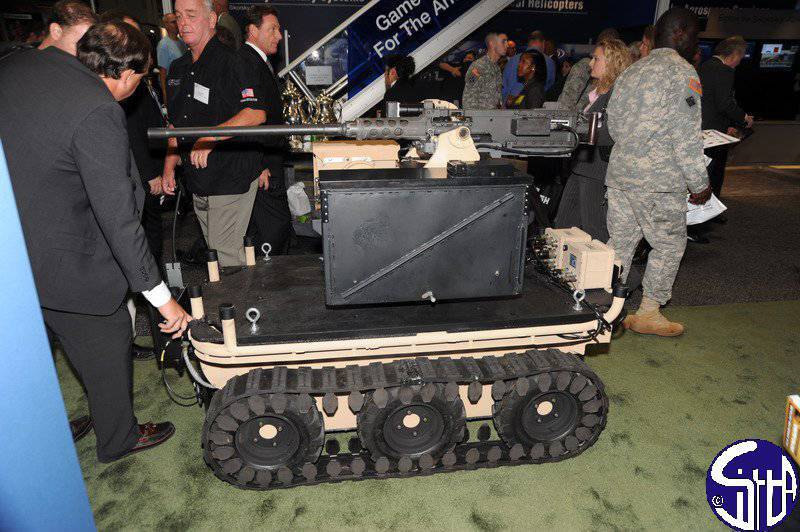
There was a category of terrestrial robots, which will finally take the burden off the shoulders of the infantry unit. These systems are capable of carrying heavy loads, they can follow the squad, leaving the soldier with only his small backpack with the essentials, while carrying heavier duffel bags. Another typical task of these robots is to replace vehicles with crews in dangerous tasks, such as delivering ammunition to the front line or evacuating the wounded from a war zone to a safer area.
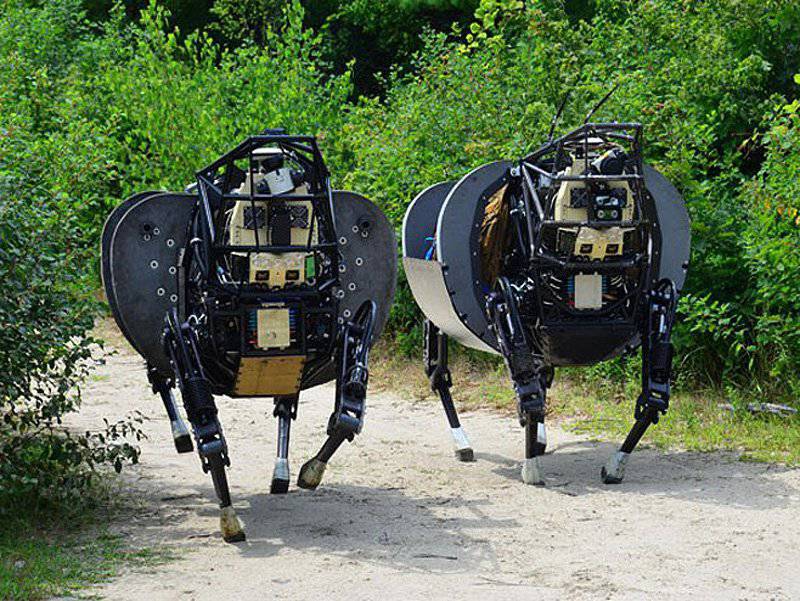
While walking robots could be the best solution to ensure mobility close to human mobility, but for now, heavy robots destined for logistics remain wheeled or tracked.
In addition, intelligence kits (even mounted on telescopic masts), as well as explosive ordnance disposal kits with robotic arms and ammunition deactivation devices can transform these platforms into specialized vehicles. The advantage of these platforms is that it is easy and simply reconfigured for other tasks in a very short time. Their level of autonomy as well as mobility can vary considerably: the majority of solutions currently available are based on wheels, which provide an average level of mobility in difficult terrain, where tracks have worked well, which in turn are noisier and more complex from a constructive point of view. At this time, walking solutions have been tested at an experimental level; As an example, here is the legged support system of the Legged Squad Support System (LS3) division developed by Darpa (Advanced Defense Research).
LS3 is a highly mobile, semi-autonomous walking robot capable of interacting with military units. The six-legged platform will eventually have a level of mobility comparable to that of a person, which will allow dismounted units to move without looking at their robots. The LS3 robot is electrically driven, it can carry 180 kg over 32 km and does not need any intervention from the 24 hour. The platform has been tested since July 2012 in the US Army and Marine Corps. The three main autonomous modes of operation of the robot are as follows:
- closely behind the leader when the platform tries to follow the trail of its leader as accurately as possible;
- in the corridor behind the leader, when LS3 follows the leader while retaining greater freedom to make decisions along the way and
- movement on route points, when the local perception of the system allows it to avoid obstacles on its way to the place indicated on the GPS coordinate grid.
The test phase was supposed to last about two years, so most likely it has already ended.
Lockheed Martin: The SMSS (Squad Mission Support System) branch robotic support system developed by this company is a ground-type “mule” robot that was tested in real combat conditions. The system was selected in 2011 by the US Army for its workhorse testing and four SMSS vehicles were deployed to the troops in 2012. They enjoyed great success with the military, who asked to leave in the area of hostilities. Their ability to carry almost 700 kg on their own movement for soldiers turned out to be extremely useful and, at least in one case, more than one ton of various stocks were loaded on the system while it worked flawlessly.
Developed around 2005, the SMSS robot, which is constantly being upgraded, is based on Land Tamer 6x6 XHD from PFM Manufacturing Inc, made of aluminum for marine vessels with a 80 hp turbo diesel engine. Some of the features provided by the Block 1 variant are: total weight 1955 kg, payload 682 kg, the unit can be transported inside CH-53 and CH-47 helicopters or on UH-60 suspension. Lockheed Martin focused on adding autonomous capabilities, SMSS is able to work in various modes, such as manual control, remote control, voice commands, return to the operator, move to a place at selected coordinate points, return along a formed trajectory, navigate through GPS coordinates, follow for the person and following the vehicle.
While the staff of the American army really wanted to keep the SMSS on their theater because of its practical value, the army and Lockheed Martin developed other functional kits and tested them in the field. These include an advanced deployment reconnaissance system with a satellite communication channel and a clearing system with a roller trawl. In both cases, a Lockheed Martin 9 ”Gyrocam opto-electronic station was installed on the mast to provide long-distance intelligence or to identify suspicious areas where bombs could be buried. The route clearing test was carried out with the roller trawl mounted on the SMSS. Also in the United States, tests were carried out to control the device using satellite communications, including the range of transmission of commands at a distance of more than 300 km. In total, Lockheed Martin manufactured eight SMSS, the last two of the Block 2 standards, although no details on the upgrade were provided.
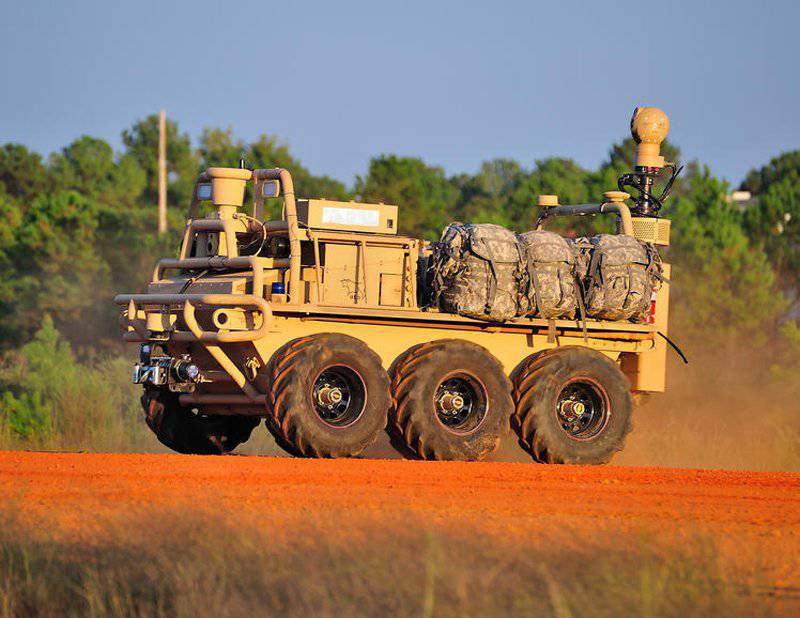
The support system for the Squad Mission Support System (SMSS) from Lockheed Martin was used in Afghanistan as a cargo platform, but is currently being offered as an intelligence tool.

You can quickly install rubber tracks on your Camel 6x6 from Northrop Grumman, which can take over 350 kg of supplies.
In August, Lockheed Martin, in conjunction with the American Army's Research and Development Center, held a demonstration in which two uninhabited helicopter systems participated: the K-MAX, developed by Kaman, and the ground robot SMSS with the Gyrocam optical unit installed. A combat mission was set with the help of unmanned vehicles to ensure the supply of a group of soldiers defending a village. K-MAX flew around the village over the SMSS, observing until the robotic system reached the soldiers, providing them with the required supplies. The 2014x8 semi-autonomous machine then drove to the observation point, where he checked the entire zone in search of enemy forces using the 8 Gyrocam touch kit on the telescopic mast. Both unmanned vehicles SMSS and K-MAX were equipped with mobile satellite communications systems, as well as local communication systems within line of sight. As a result of further developments, a new fully autonomous platform may appear, as well as non-lethal and / or lethal capabilities with a turret.
Northrop Grumman: This company has developed a Camel robotic vehicle (Carry-all Modular Equipment Landrover - a modular all-terrain vehicle for carrying everything) to provide logistic support for the walking patrol. The system represents the failure of the 6x6 platform, over the wheels of which you can easily put on rubber tracks if necessary. Each wheel rotates from an electric motor that is powered by a diesel-electric generator. The engine runs on diesel or JP8, and its tank on 13 liters allows you to work more than 20 hours; such a solution when approaching a potential hazard allows you to move in a silent mode. The maximum speed of the device is eight km / h, it can overcome 40% slopes, 20% side slopes, obstacles and 0,3 ford meters. Its load, laid inside the tubular structure mounted on the chassis, may exceed 350 kg.
Armed version of the Camel - Mobile Armed Dismount Support System during fire tests
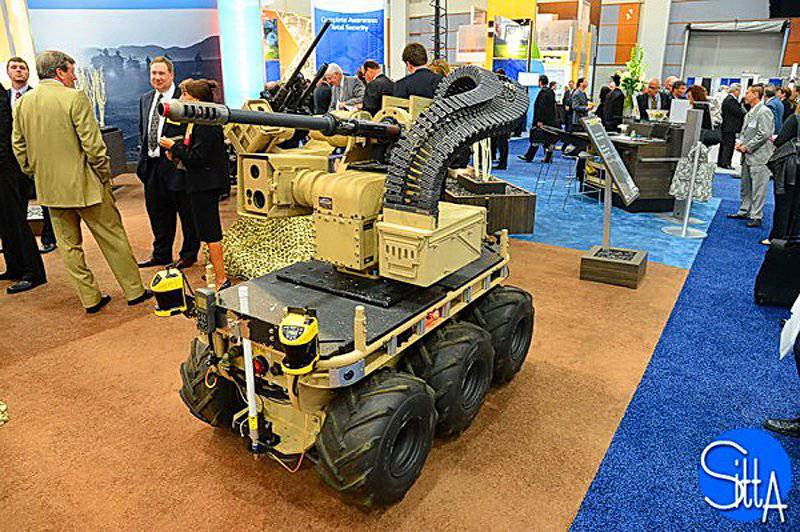
Armed version of a Camel with an installed remotely controlled combat module
Multitasking robotic system Protector, developed by HDT Global; in the photo works as a cargo transporter
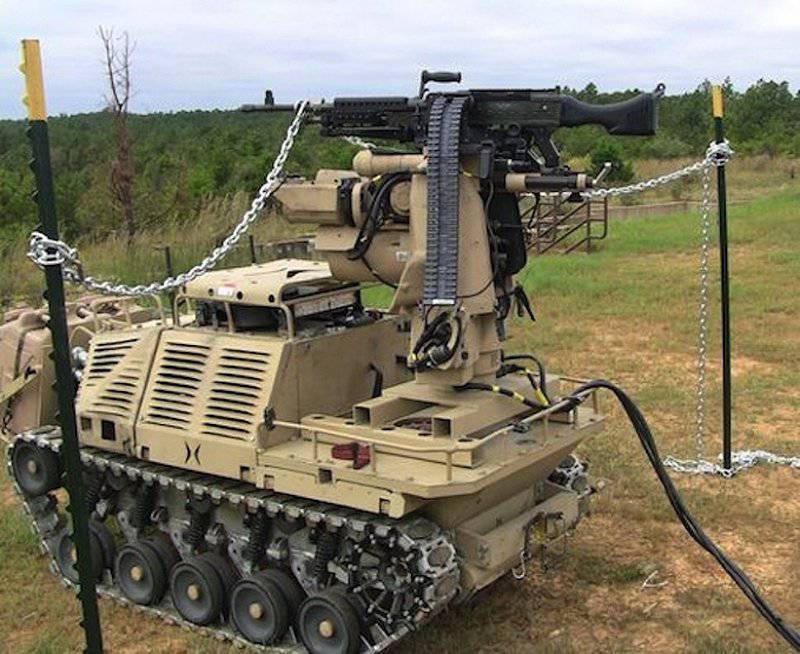
The mass and payload of Protector allow you to transform it into an armed platform, in the photo is a robot with the Crows combat module installed
Camel is equipped with a touch detection kit and obstacle avoidance. It can be controlled in “follow me” mode or via cable. In the transport column, the vehicles can follow each other like train carriages. Numerous optional kits are offered for the already mentioned kit, for example, an external battery pack to increase the power reserve, interchangeable communication channels, optical fiber, a hard cable, or radio frequency systems. According to the company, the US Army and the command of special operations forces have shown great interest in the platform in its basic configuration, as well as in the armed configurations described later in this article.
HDT Global: The Protector tracked robot was developed by HDT Global as a multitasking system for providing soldiers in the field. The device has a diesel engine with a power of 32 hp, it can carry loads of 340 kg weight, and pull 225 kg on the trailer. Protector can be quickly disassembled into portable modules so that you can overcome unforeseen obstacles. The fuel tank for 57 liters (diesel or JP8) allows you to have a power reserve of 100 km. The maximum speed of the robot is 8 km / h. The base unit is remotely controlled, and the cruise control mode helps reduce the workload on the operator.
HDT also demonstrated that its robot can get some level of autonomy with semi-autonomous navigation based on a variety of sensors, including optoelectronics, active RFID tags, a lidar, a differential GPS system, a heading orientation system, and odometers on an asterisk on each track. In order to increase the safety of work in the “follow me” mode, at least two sensors must be coordinated according to the location of the leader before the Protector follows it. For auxiliary equipment, the system has a hydraulic output and a connector with an output electrical power of 2 kW. In addition to performing practical tasks on clearing routes and neutralizing explosive objects (which is not the purpose of this article), the ground robot Protector can also be equipped with an excavator bucket and front shovel to assist in the construction of protective structures for posts and bases (filling gabions with earth, etc. .). After these works, the device can be quickly returned to the performance of patrol duties. They also demonstrated a variant with two stretchers for evacuating the wounded, an option with a tethered UAV for surveillance and an armed version with a remotely controlled M-153 Crows combat module. Wireless control is performed with a thumb stick and two buttons.
In Israel, two companies, Israel Aerospace Industries and Robo-team, have developed a wheeled cargo platform.
IAI: Lahav Division of Israel Aerospace Industries developed a diesel engine 4x4 with a diesel engine and gave it the designation Rex. The maximum speed of the robot 12 km / h, load capacity up to 250 kg, dead weight without refueling is from 160 to 200 kg. His first task is to support foot patrols by transporting part of the soldiers' equipment. The robot can operate in three different modes. The easiest is remote control. In the second, a mechanical “leash” is used, which is held by the operator, and the Rex robot follows him along his path like a dog. The most intelligent is the “follow me” mode. The coordinates of the operator are transmitted via radio to the on-board GPS system, which produces intermediate points of the route of the Rex apparatus. In this mode, several Rex robots can be used to carry more equipment. Although this was not implemented on the prototype, the Rex unit can record the traveled route in order to return to the starting point, the mode can be useful for the next replenishment of stocks along the routes already passed and what is more important for the return of the injured.
IAI Lahav Division has developed a Rex 4x4 platform capable of carrying up to 250 kg. In the new version, the load capacity will increase at least to 300 kg
Probot with a lifting capacity of almost 250 kg, created by Robo-team, can be used to restock or evacuate the wounded. Also offered sensor kits and kits for the disposal of explosive objects.
Rex is not only offered for logistics tasks, but also for other tasks, such as reconnaissance with a kit, which includes an optical optoelectronic station. The Rex prototype was evaluated by the Israeli and other armies, whose comments and feedback led to the creation of the second-generation Rex. The main changes affected the size and weight: the new robot will have a minimum load capacity of 300 kg when increasing its own weight to 230 or 250 kg. Modes of operation will be the same as the previous version; IAI believes that increasing the level of autonomy will significantly increase the cost, which goes against the company's marketing strategy. What has really changed to a great extent is the mover; A second-generation diesel-electric power unit is installed on the Rex unit, which allows you to “crawl silently” in low visibility mode. According to IAI, the prototype of the new version of Rex will be ready for testing at the end of 2014.
Robo-Team: In the first part of this great article, we already met with the company Robo-Team. In the same category, it offers the system under the designation Probot (Professional Robot). This is an electric 4x4 chassis with a load-carrying capacity of more than twice its own weight of 120 kg. The electric propulsor was chosen to provide maximum sonic stealth compared to much more noisy robots in this category, which are equipped with gasoline and diesel engines. Its maximum speed of 7,5 km / h makes it easy to follow the soldiers, while its ability to overcome obstacles and ledges with a height of 23 cm ensures sufficient cross-country maneuverability. Probot has an 360 ° overview, which is provided by four day / night cameras (one per side) and a circular illumination module in the near infrared region of the spectrum. The front camera can be tilted at 45 ° / + 90 ° and has an increase of x10, while the illumination is provided by an LED white light lamp. Available voltage 12 volts or 28 volts, there are Ethernet ports RJ45 and RS232 for matching the installed hardware with the on-board computer.
Robo-team offers such kits as, for example, a bomb disposal kit that includes a heavy-duty arm, a reconnaissance kit, sets of detection of weapons of mass destruction and hazardous substances, etc. Probot is equipped with a communication channel with a radius of action in line of sight of 1000 meters. In addition, the platform is equipped with tracking and thermal imaging sensors for automatic navigation in the city, indoors and in open areas, and the “follow me” system allows the Probot to automatically follow the detachment of infantry to which it is assigned. The company Robo-team is not very verbose when it comes to its device Probot. Its development is still ongoing, several prototypes are from potential customers in order to receive comments from them before the start of production. The company, of course, is working on autonomy kits, which could easily find their place in the Probot robot due to its size and autonomy.
Quinetiq: In recent years, Qinetiq North America has developed many robotic systems in a difficult category for various purposes: route clearing, reconnaissance, combat, etc.
For the tasks of providing the company has developed solutions aimed at the robotization of existing machines. Its optional robotic appliqué kit (RAK) can be installed in approximately 15 minutes on 17 different Selectable Joystick Controlled (SJC) Bobcat loaders used for various types of tasks, mainly for clearing routes, such as the Minotaur and Raider I or unmanned engineering Spartacus. For the purpose of logistic support for infantry, QinetiQ North America, in conjunction with Polaris Defense, developed the Raider II, as this vehicle is based on the previous model Military Diesel Crew Long Box. Left the ability to control the driver and in this case, the maximum speed reaches 55 km / h. Without a driver, Raider II can work in remote or autonomous mode. In the first case, it is controlled through the tactical controller Tactical Robotic Controller with a range of one kilometer; in the second mode, the device can detect obstacles, bypass obstacles, follow the operator, move along points of the route and return home. The day and thermal imaging cameras with the 640x480 matrix with magnification on the turntable support device are mounted on the safety cage, while the other four cameras provide a circular 360 ° coverage. Soldiers can hang up to 10 thing bags on board, on the cargo area can also be secured two stretchers to evacuate the wounded.
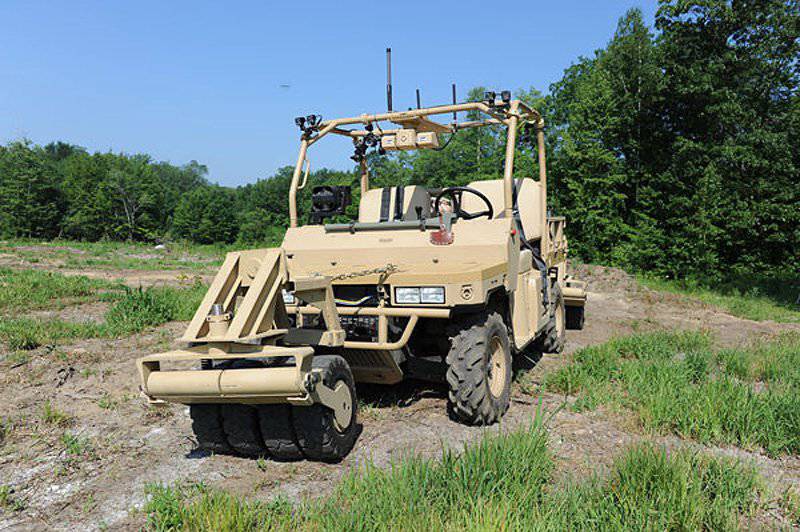
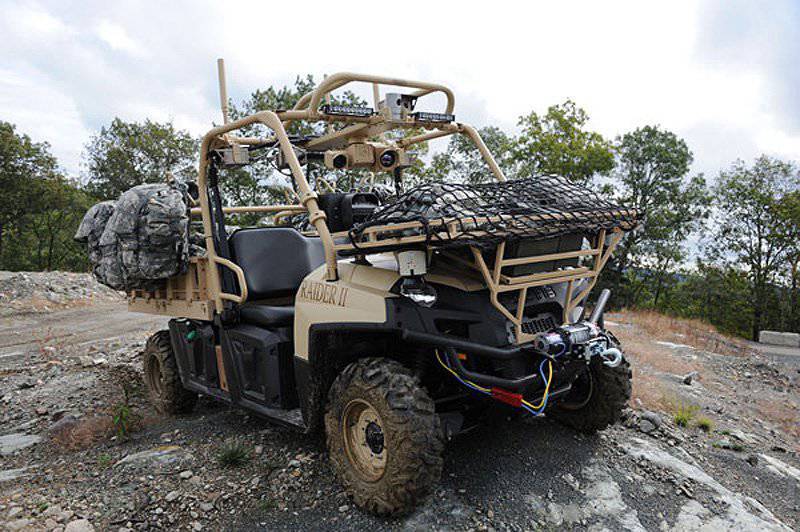
Raider I above, Raider II below
Transformation of the car buggy in unmanned systems is not new: the company Boeing UK and John Deere have developed a similar system a few years ago, calling it R-Gator A3 with a load capacity of 635 kg.
Sterela: Given the task of developing the landing gear for Air Cobot airports (Cobot, the ornate acronym Aircraft enhanced Inspection by SmaRt & Collaborative robot), the French company Sterela unveiled the new platform at Eurosatory 2014 as a mule. The 4-wheel drive chassis is equipped with integral and remote emergency shutdown systems required in industrial environments, including obstacle detection bumpers. The carrying capacity is 100 kg, the communication channel has a range of 200 meters, the device is powered by electric motors, 48-volt lithium-ion batteries allow the device to work up to 8 hours.
The Sterela platform has a separate wheel control, it can work in the “follow me” mode or follow a pre-programmed route, the latter is offered as an option. Standard speed is 7 km / h; however, an optional engine can boost it to 18 km / h.
The French company Sterela has developed a robotic platform 4x4 for use at airports, but currently offers it as a logistic tool for military tasks
Sera Innerierie: The French company Sera Ingérierie, part of the Sogeclaire Group, received a contract from the Office of Defense Procurement for the development of a robotic vehicle under the Rapid program (Regime d'Appui Pour l'Innovation Duale - provision mode for double innovation). The architecture is driven by transportation requirements, the resulting robot named Robbox consists of a top beam that connects two self-propelled modules, each of which can be either a diesel or an electric motor. The diesel module is equipped with an HP 16,75 engine. and the electric module has an 15 kW electric motor and a 6 kWh lithium-ion battery. Depending on the choice of layout, the steering has one bridge or two. In the second case, the turning radius decreases from 5,4 to the 3,4 meter, which is equal to the rotation around its axis, since this is the length of the Robbox. The maximum onboard power is 2 kW, the maximum mass 500 kg. It is divided into two modules, the first with maximum dimensions 2400x1200x400 mm and smaller than the second dimensions 1200x1500xXNNUMX mm. Ground clearance 550 mm allows you to have a good cross through the obstacles.
The French company Sera has developed a wheeled robotic platform under the name Robbox consisting of two self-propelled modules and a central beam; in the photo there is an option with installed sensors from MBDA
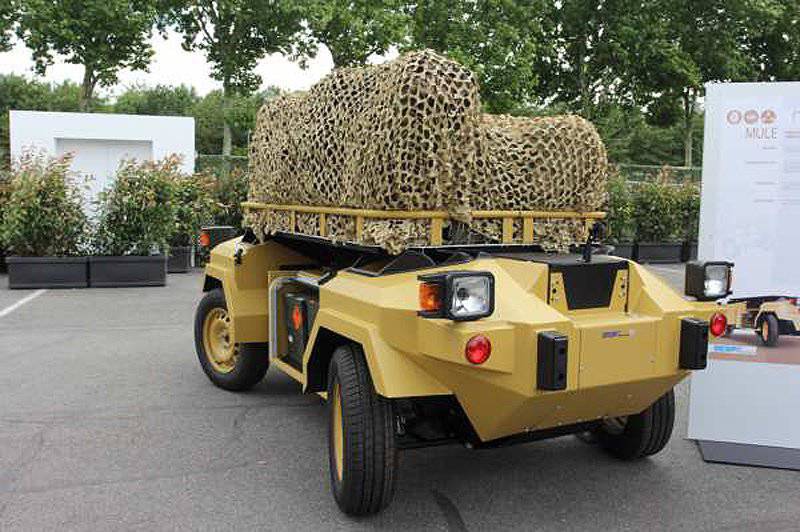
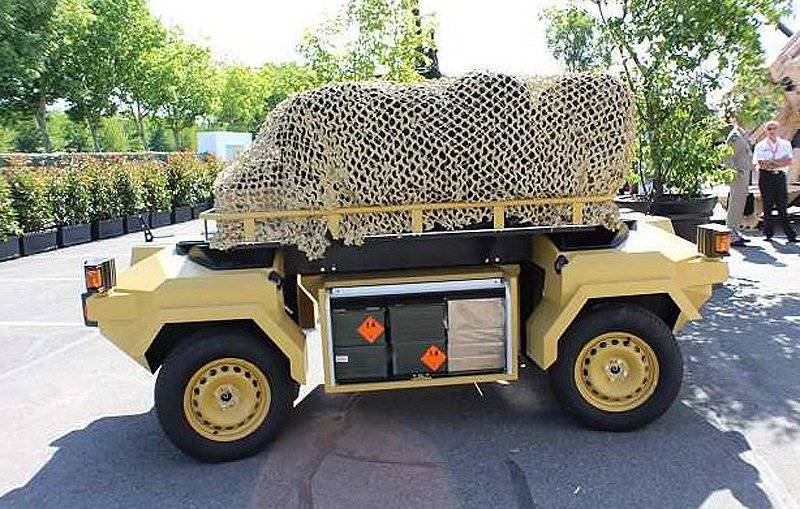
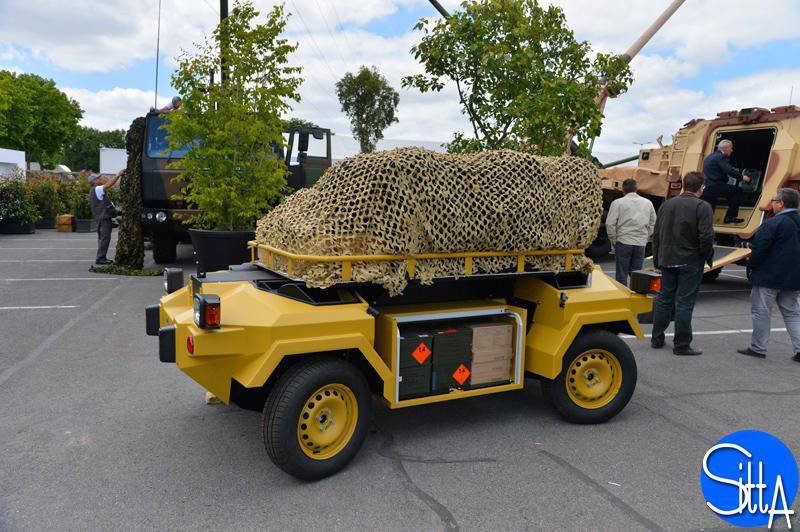
Nexter took Seras' Robbox as the basis of its Mule concept; apparently also considered the creation of an armed version
Robbox can overcome 40% slopes and vertical obstacles 250 mm in height. Its maximum speed in remote control mode is 40 km / h, dropping to 8 km / h in driving mode on an electric motor. In the mode of operation on a diesel engine, its power reserve reaches 300 km. Sera Ingnerner supplies the Robbox with a command and control set of three different levels, ranging from the basic version with only actuators, the medium version with a communication channel, six cameras and a remote control and to special configurations developed by third parties. Two of them, Nexter and MBDA, presented Robbox in two different configurations at Eurosatory.
The sample from the Nexter company received the name Mule, it differs in the upper cargo area and lower cargo hold. It is able to carry 300 kg, but the total maximum load capacity is limited to 400 kg, because with all the installed structural elements and systems, the empty mass of the robot increases to 800 kg, which degrades some of its characteristics. The key system that Nexter has added is an optional control kit that includes differential GPS, odometer, magnetic compass, gyrometers, accelerometer, laser navigation sensors and a scanning laser for detecting obstacles. The developed software allows, in addition to the standard remote mode, to also use automatic modes, for example, following intermediate points, recording the path and repeating, follow me, etc. The robotic machine presented at the Eurosatory exhibition has not yet been adequately tested and, therefore, the running tests of the Robbox began in September 2014. Nexter plans to begin performance operational tests at the start of 2015, the purpose of which is primarily to test various autonomous modes, such as “follow me,” since the French Defense Procurement Directorate intends to use Mule to develop operational doctrine for robots. In this regard, advanced modes are being studied that will allow the soldier to “ask” the robot to stop, wait, join the infantry team, etc. in order to provide real effective support to battlegroups of 10 people. Nexter seeks to develop a multi-purpose ground robot, and this suggests that, apparently, an armed system based on this platform is already in the plans.
For its part, MBDA offered Robbox in the M2R configuration, a multi-touch air defense platform. In this configuration, the Robbox turns into an air defense system that can be deployed in dominant positions without risking soldier lives. M2R is equipped with an Spynel-X infrared search and tracking sensor developed by the French company HGH Infrared Systems, which is capable of capturing panoramic images with 120 megapixel resolution with a detection range of 16 km. After the threat is detected and monitored by the Spynel-X sensor, an opto-electronic system consisting of a daylight camera and a thermal imager with high magnification provides positive target identification. In Paris, the robot was introduced with the Ranger MS mast sensor from Flir Systems. These sensors can also be deployed for ground surveillance.
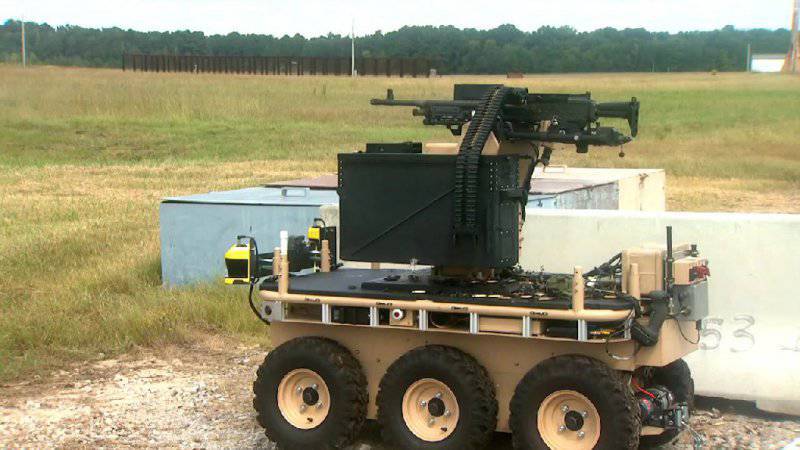
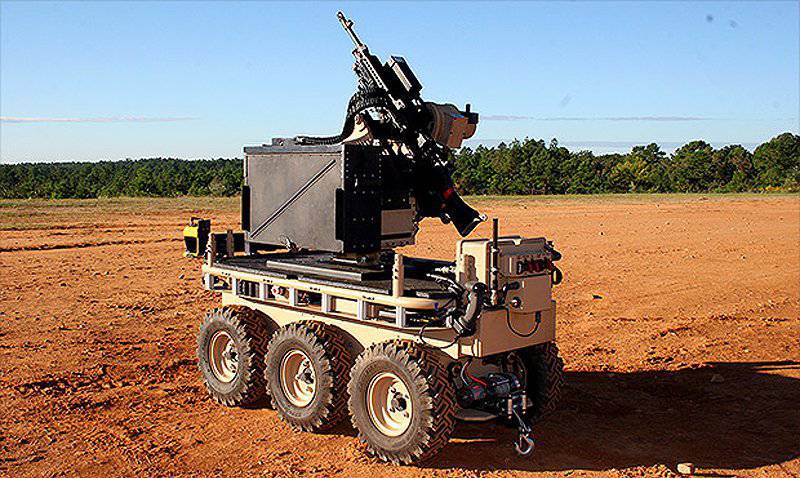
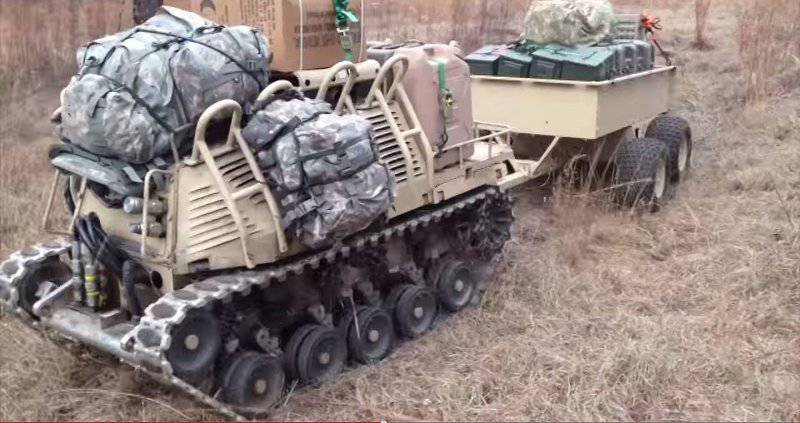
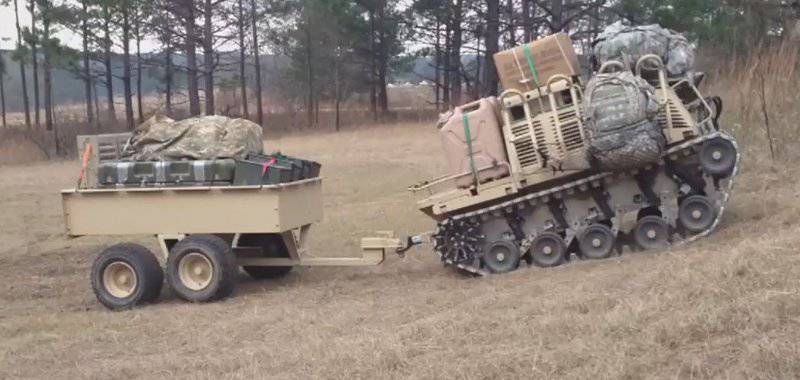
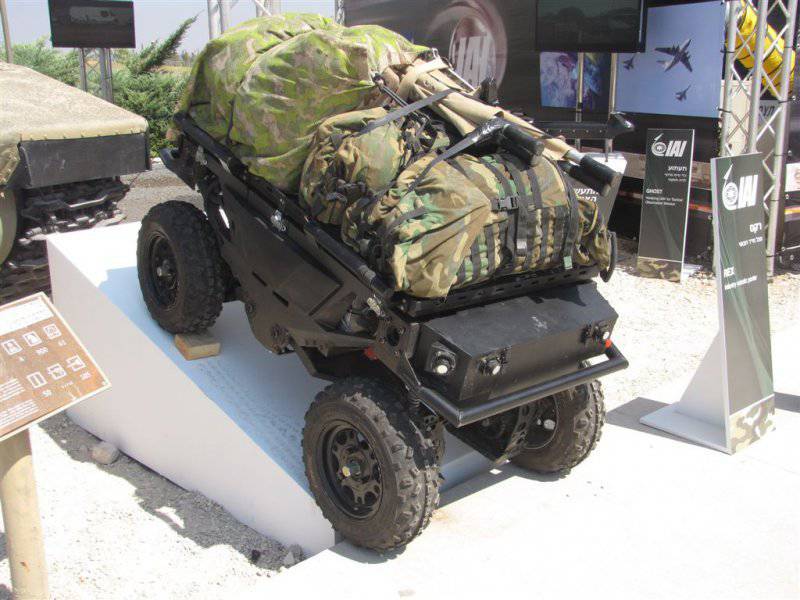
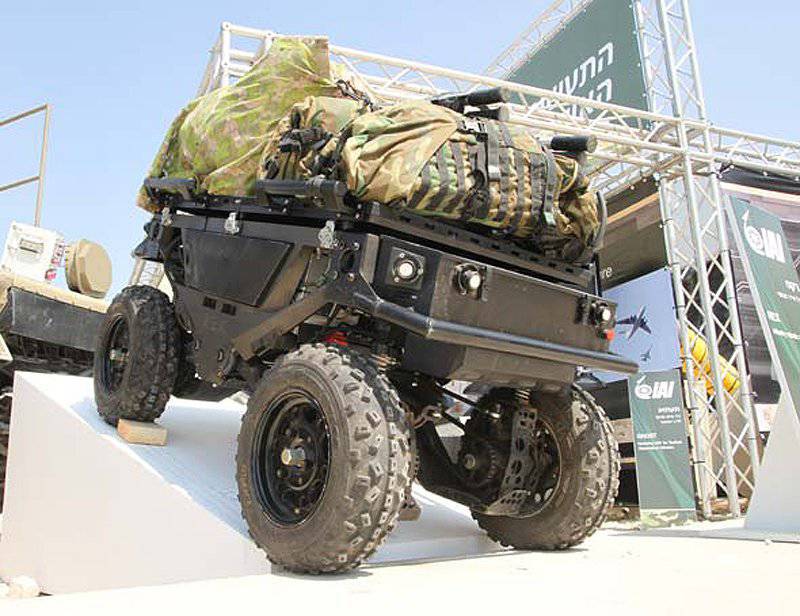
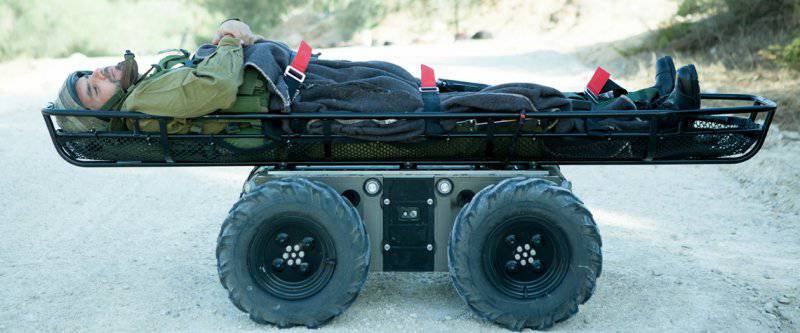
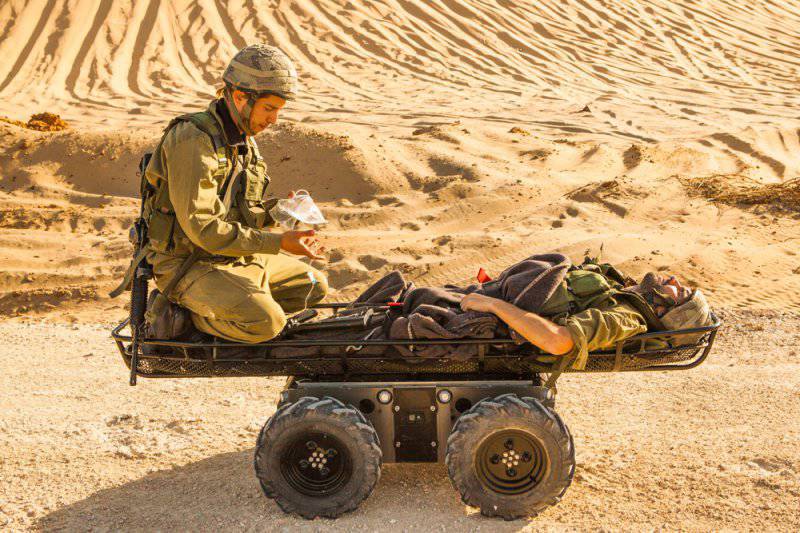
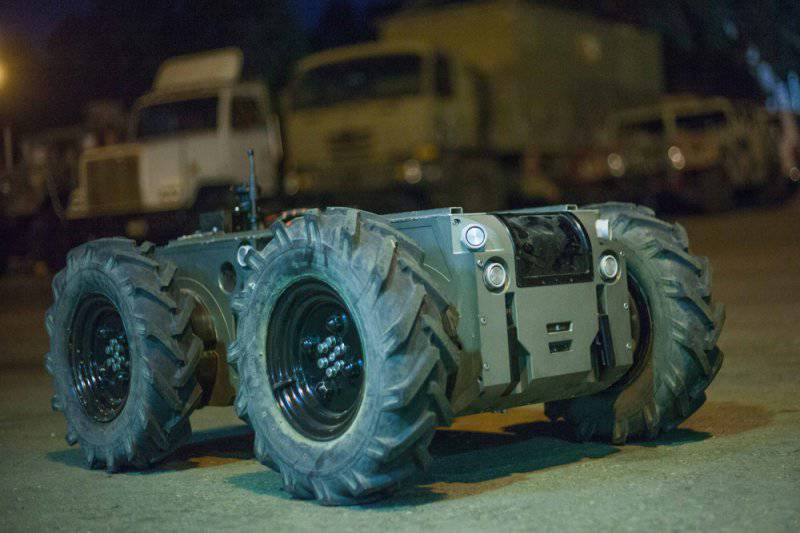
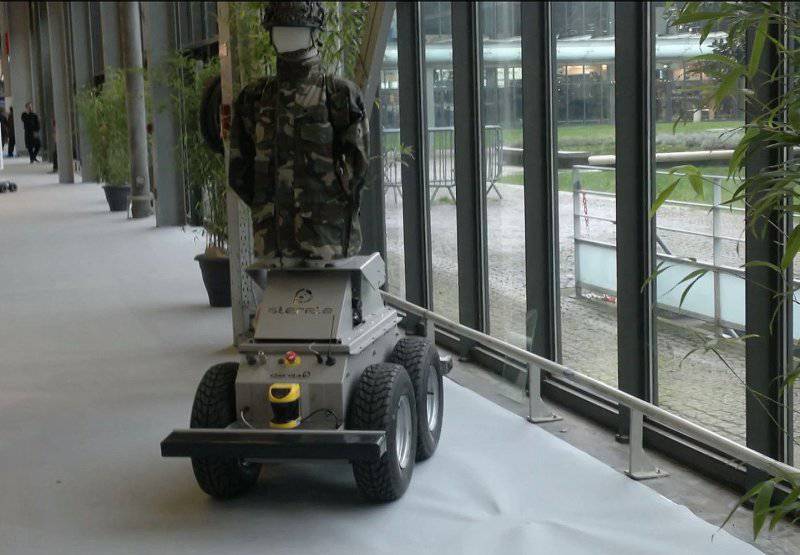
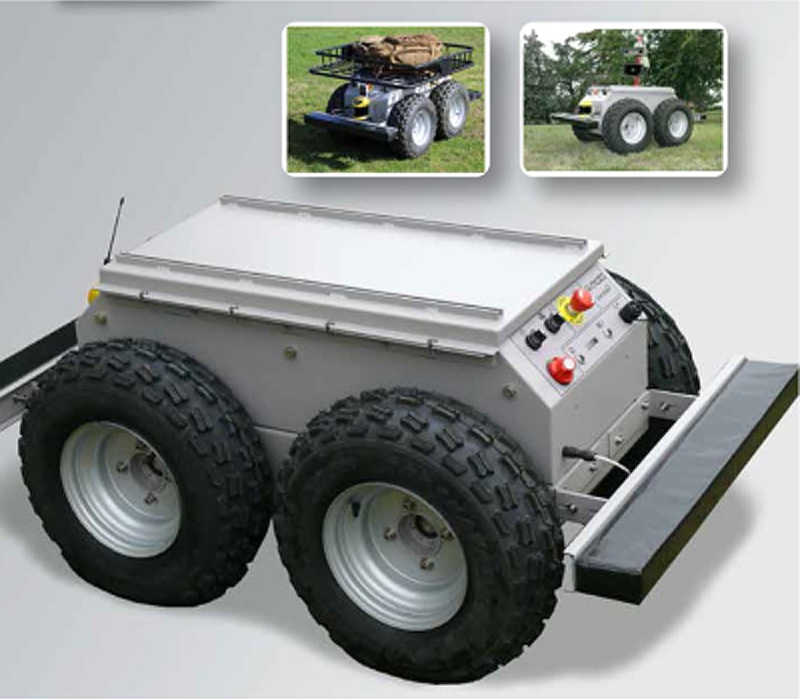
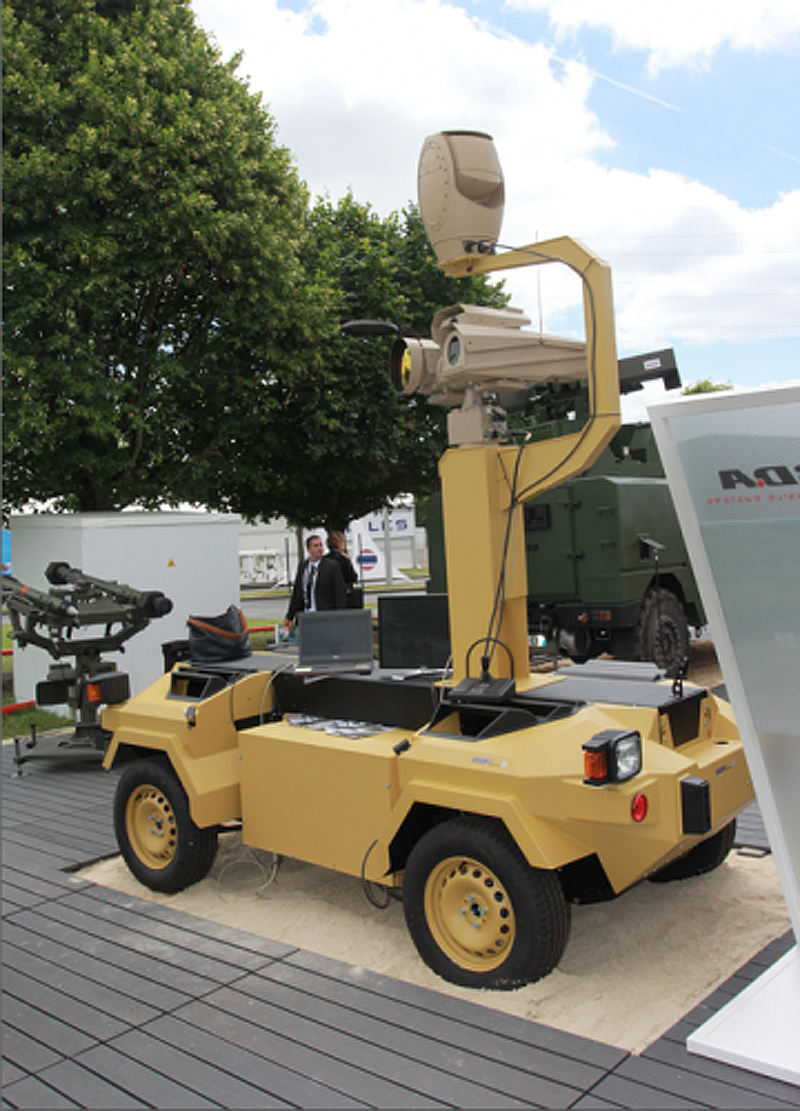
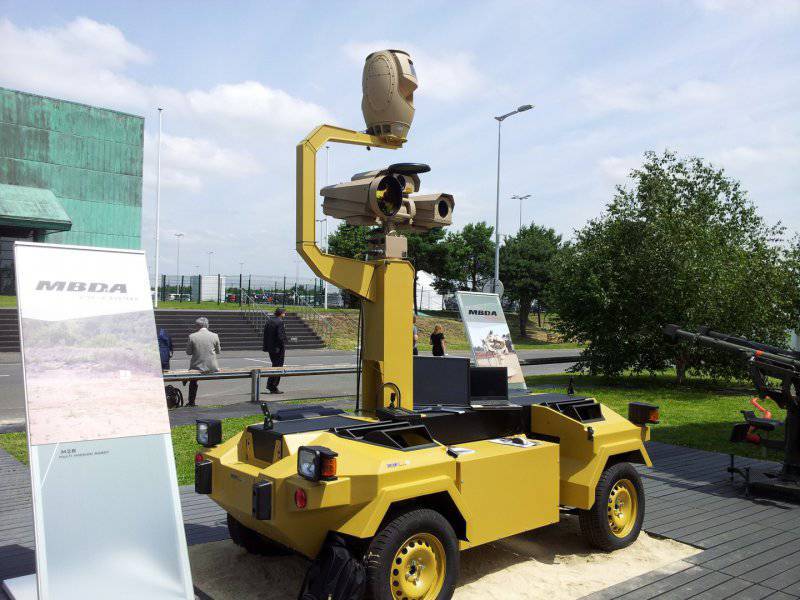
Information